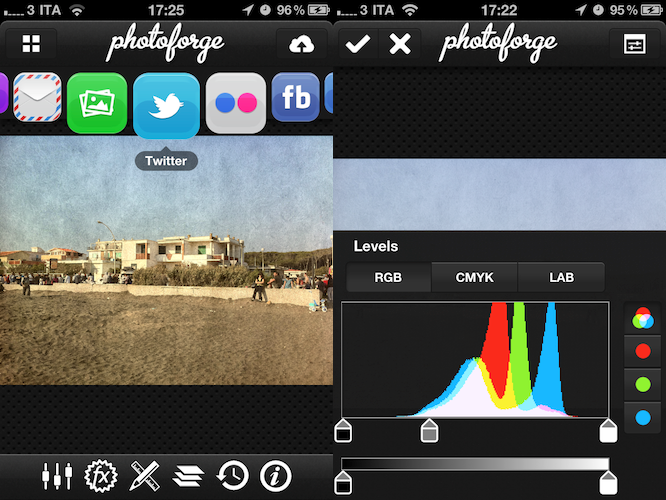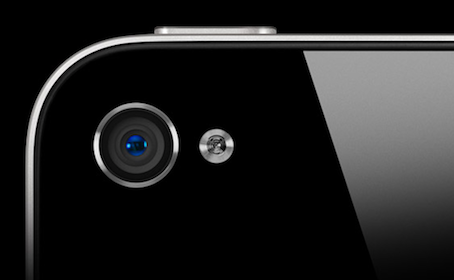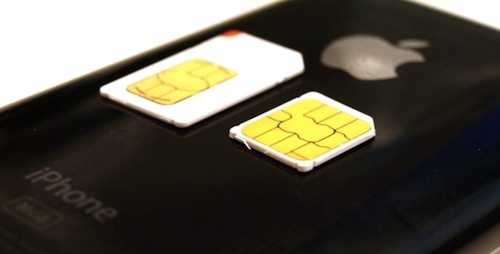Here are today’s @MacStoriesDeals on iOS, Mac, and Mac App Store apps that are on sale for a limited time, so get them before they end!
Posts tagged with "iPhone"
#MacStoriesDeals - Thursday Night!
PhotoForge 2 Released, Brings Powerful Image Editing to iOS
Announced last week as a successor to the popular lightweight image editing software for iPhone and iPad PhotoForge (which we reviewed here), PhotoForge 2 is a complete rewrite of the original app, sporting a completely new UI, more image editing features, new export options and a faster engine to bring semi-professional editing to the iPhone. In spite of the iPad version being advertised in the launch promo video, PhotoForge 2 is available today at $0.99 on the iPhone, with the iPad version coming in the next weeks as a Universal update. The GhostBird Software developers have decided to make PhotoForge 2 a standalone app, as the App Store doesn’t come with an upgrade policy and they felt that version 2.0 was worth paying a separate price. Indeed, the app sports several new functionalities and paying $0.99 now with the promise of an iPad update for free relatively soon sounds like a great deal. Plus, once the iPad update comes out the app will be priced at $2.99 for the remainder of May, although the full retail price is $4.99. That means you can get the app now and save $4, or wait for the iPad update and still save $2. The app has started propagating this morning in iTunes and is available here.
PhotoForge 2 is a full-featured image editing app for iOS, perhaps the most powerful available on the App Store. Whilst I can’t go through all the features now as I’ve played with the iPhone app for less than an hour (but we’ll make sure to have a full review once the iPad app is released), I can say there’s a notable difference when using the PhotoForge 1 and this 2.0 update. PhotoForge 2.0 has got a whole new interface revolving around the concept of “docks” (like the standard OS X one) that are basically a list of icons and buttons to navigate through the various image editing functions. Once you load a photo from your Camera Roll and start a new project, you can tap on the FX button in the bottom toolbar to scroll through a series of effects to apply to your photo in real-time, most of them being similar to the ones offered in apps like Instagram and Camera+. In PhotoForge 2.0, photos fit to screen by default, but you can double-tap them to edit them at full resolution looking at all pixels on screen. As I said effects are applied in real-time, with a loading bar at the top showing progress – on the iPhone 4, everything is quite smooth and responsive, though I expect the iPad 2 version to be a little snappier given the A5 processor. There’s lot of stuff to play with in PhotoForge 2.0, including layers, exposure control, brightness and contrast, or standard RGB levels. It feels like a mini Photoshop version, ported to a smaller screen with controls rewritten for multi-touch. Of course, you can’t expect all the functionalities of Photoshop to be available in PhotoForge 2.0, but this thing does undoubtedly have more options and settings than the average iOS photo editor. You can tweak opacity and blend modes, create and duplicate layers or fill a new one with color, copy and paste masks or apply sharpening and noise reduction.
Because the feature list is huge and I’ve only been playing with the app this morning, here’s a list of functionalities for comparison’s sake:
- Curves & Levels with RGB, CMYK and LAB colorspaces.
- Sharpening & Noise Reduction
- HSL & Channel Mixer controls
- Brightness & Contrast, Exposure, Vibrance
- White Balance, Shadows & Highlights
- Auto Exposure & Auto White Balance
- Precise Image Cropping and Resizing
- Customize your film, lens, flash and much more to create amazing looking photographs with the Pop! Cam add-on
- Great Black & White and Sepia filters
- Lomo, Gothic, Dreamy and 3D
- Crystallize, Pointallize and Impressionist.
- Bulge, Pinch & Twirl
PhotoForge 2.0 is meant for both for professional and casual users (thanks to an intuitive interface), and I have a feeling the iPad counterpart, with larger real screen estate, will make image editing even better as I’ve noticed editing on the iPhone can be sometimes a little frustrating because of the smaller screen – meaning, when applying some effects or setting other options there’s a chance you won’t see the full image in front of you, and the iPad should fix this issue. However, I was impressed by the sharing functionalities of PhotoForge 2.0, which include Flickr, Tumblr, Facebook and Twitter sharing, FTP and Dropbox uploading, or standard emailing and saving to the Camera Roll. The selection of services is really impressive and the Dropbox addition quite welcome, though I’d like to see direct CloudApp integration as well.
As it stands now, I think PhotoForge 2.0 is the most powerful and beautiful image editor for iPhone. The iPad version is something I’m really looking forward to, and while you wait you should get the app here at $0.99. It’s simply a great update.
China Mobile Claims It Reached A Consensus With Apple Over A 4G iPhone
In a report on MarketWatch, China Mobile states that it has reached a consensus with Apple regarding the use of 4G technology on future iPhones. The iPhone 4 currently uses 3G technology, 4G is the ‘next-generation’ technology for mobile data which promises even faster speeds.
Wang Jianzhou, China Mobile’s Chairman, didn’t specify many details about the agreement but says that they will be beginning 4G trials in China beginning next year and that discussions with Apple are continuing. Bloomberg today also got some additional details from Jianzhou, but in that report, the consensus with Apple was not mentioned.
The company may also be able to offer Apple Inc. (AAPL)s iPhone with the shift to TD-LTE, Wang said. While Apple has decided not to make a version of the phone for the third-generation TD-SCDMA system that is used only by China Mobile, the Cupertino, California-based company may produce one for the TD-LTE system, he said.
It follows yesterday’s report from DigiTimes that this year’s iPhone was originally meant to have LTE capability (a 4G technology) but was scrapped after it was discovered Qualcomm was having problems producing chips in large enough quantities. In that report it was said that China Mobile was expected to reach a deal with Apple soon to offer the next iPhone on it’s network this year – contradicting the Bloomberg report.
[Via MacRumors]
#MacStoriesDeals - Wednesday
Here are today’s @MacStoriesDeals on iOS, Mac, and Mac App Store apps that are on sale for a limited time, so get them before they end!
Final Fantasy Tactics for iPhone Launching This Summer, Coming to iPad Too
Originally announced at E3 2010, Final Fantasy Tactics for iPhone (a porting by Square Enix of the PSP game that was another porting from PSX) has gone through a series of “misunderstandings” and delays regarding the release date, which apparently was initially confirmed for September 15, 2010, but was later denied by Square Enix, who went on to say the game would come in Spring 2011. With June approaching and the game still nowhere to be found in the App Store, it looks like Square Enix won’t make it for a Spring launch, but this time the company has posted an update on the app’s official Facebook page, reassuring everyone that Final Fantasy Tactics will land on the iPhone between June and July, and that an iPad “HD” version is also in the works, although it will launch after the iPhone porting.
Assistant producer Shiina writes:
But now the development reaches the final step and we can see the actual schedule. Thus, YES, finally I can tell you when it will be released.
FFT: WoL will be on sale somewhere between late June - mid July. We have announced “It’s coming Spring 2011” last year so we’re now working pretty hard for the release in June because July is not spring anymore.
We’re also making the iPad version which supports 1024x768px HD resolutions.
No details on pricing have been revealed yet, and information on the iPad version is scarce. It’s good, however, to see the game finally approaching public release after a year of waiting – I played both the original FFT on my PSX and FFT:WOL on the PSP, and I can’t wait to see how Square Enix will redraw controls for multitouch, or simply add new content for iPhone owners. [via TUAW]
OmniVision Introduces 5 MP Sensor With 1080p Video Recording
Earlier this morning we reported on some rumors from DigiTimes regarding the production timeline of the upcoming iPhone 4S and rumoured components that it would include. In their report, DigiTimes claimed that it would contain an 8 MP camera from OmniVision Technologies, and to some degree it makes sense. Sony’s CEO in April made a fleeting comment suggesting that it would be supplying Apple with an 8MP camera for the next iPhone. However, those same comments were later suggested to have been largely “invented” by bloggers attending the event.
OmniVision today introduced a new 5MP image sensor, the OV5690, that was developed to produce the “best-in-class image quality” whilst being an effective solution for slimmer mobile devices such as smartphones and tablet computers by reducing the size of the camera module. With contradicting reports on whether the next iPhone will contain a 5 MP camera or an 8 MP camera, this new product certainly lends weight to the suggestion that it could have a 5 MP camera. In recent times Apple has been ferocious in crafting its devices to be as thin and light as possible, and this latest component by OmniVision could enable Apple to deliver on that goal with improved image quality (and 1080p video recording at 30 fps) whilst fitting into a smaller package.
With industry sources placing 5-megapixel CMOS image sensors at more than 15 percent of the overall sensor market today, we view 5-megapixel sensors as occupying as a sweet spot in the market. (Emphasis Added)
The iPhone 4 currently sports an older OmniVision camera component that is also 5 MP but only records video in 720p. Apple may well choose to stick with OmniVision and deliver a slightly improved camera in its next iPhone – which may be in line with reports of just small, evolutionary, improvements for the next iPhone. Although interestingly, OmniVision also revealed in early January that it had introduced a 10MP camera sensor that would similarly enable 1080p video recording at 30fps.
iPhone and iPad Win “Display of the Year” Awards→
iPhone and iPad Win “Display of the Year” Awards
As noted by Jim Dalrymple at The Loop, Apple’s iPhone 4 and iPad have been awarded the Display of the Year prizes by the The Society for Information Display. Apple devices were mainly awarded for the usage of In-Plane Switching (IPS) technology, which provides greater viewing angles and brightness quality than other displays found on phones and tablets. The iPhone 4’s Retina Display, packing four times the pixels in the same old iPhone screen, was also mentioned for setting a new benchmark in mobile display solutions, as well as new standards in power consumption and image quality.
iPhone:
Utilizing Mobile IPS (in-plane switching) technology, the iPhone 4 Retina display achieves a viewing angle superior to conventional mobile LCDs, providing an enhanced viewing experience for the end user in virtually any application. The display features a host of technical advancements: customized LTPS TFT backplane with organic passivation and optimized pixel design; user-customizable, auto-adjustable brightness using ambient light sensing; advanced IPS compensation polarizer technology for high contrast (800:1) and color consistency regardless of viewing direction; 8-bit color depth; an ultra-thin, tiny-footprint driver IC; and patent-pending mechanical integration.
iPad:
The iPad display provides a superior viewing experience with a minimized gamma shift over viewing angles, enabling designers to create innovative apps that further enhance the viewing experience. The iPad’s fully customized design leverages the existing amorphous silicon thin-film transistor (a-Si TFT) infrastructure in an innovative, ultra-thin product with the unique LCD and an innovative power-management system that achieves maximum power efficiency – 10 hours of battery life for WiFi web surfing and 9 hours for 3G web surfing.
I’m no display expert, but in my experience with smartphones and tablets from other brands, I can say I haven’t found another screen that matches the quality of my iPhone 4 and iPad 2. The iPhone 4, despite being almost one year old, still manages to impress with its Retina Display.
#MacStoriesDeals - Tuesday
Here are today’s @MacStoriesDeals on iOS, Mac, and Mac App Store apps that are on sale for a limited time, so get them before they end!
Apple Proposes Standard To Make SIM Cards Smaller
According to Reuters, an executive of Orange has confirmed the French carrier is backing Apple’s plans for a new standard to make SIM cards smaller in order to use them in future thinner mobile devices. The proposed standard aims at reducing the size of SIM cards, which are currently implemented as “micro” models in the iPhone 4 and iPad.
We were quite happy to see last week that Apple has submitted a new requirement to (European telecoms standards body) ETSI for a smaller SIM form factor – smaller than the one that goes in iPhone 4 and iPad,” said Anne Bouverot, Orange’s head of mobile services.
“They have done that through the standardization route, through ETSI, with the sponsorship of some major mobile operators, Orange being one of them,” she told the Paris leg of the Reuters Global Technology Summit.
Reuters claims the approval process for such a new standard would take time, with new devices carrying the new SIM models not coming out at least until next year. A rumor surfaced last year indicated Apple was working closely with Gemalto to develop an integrated SIM card that would be embedded in every iPhone to enable users to quickly switch between carriers without restrictions and obligations, but this new report seems to suggest Apple is simply aiming for a smaller chip, perhaps following the opposition from carriers to an embedded SIM that would cut mobile operators out of the retail game.










